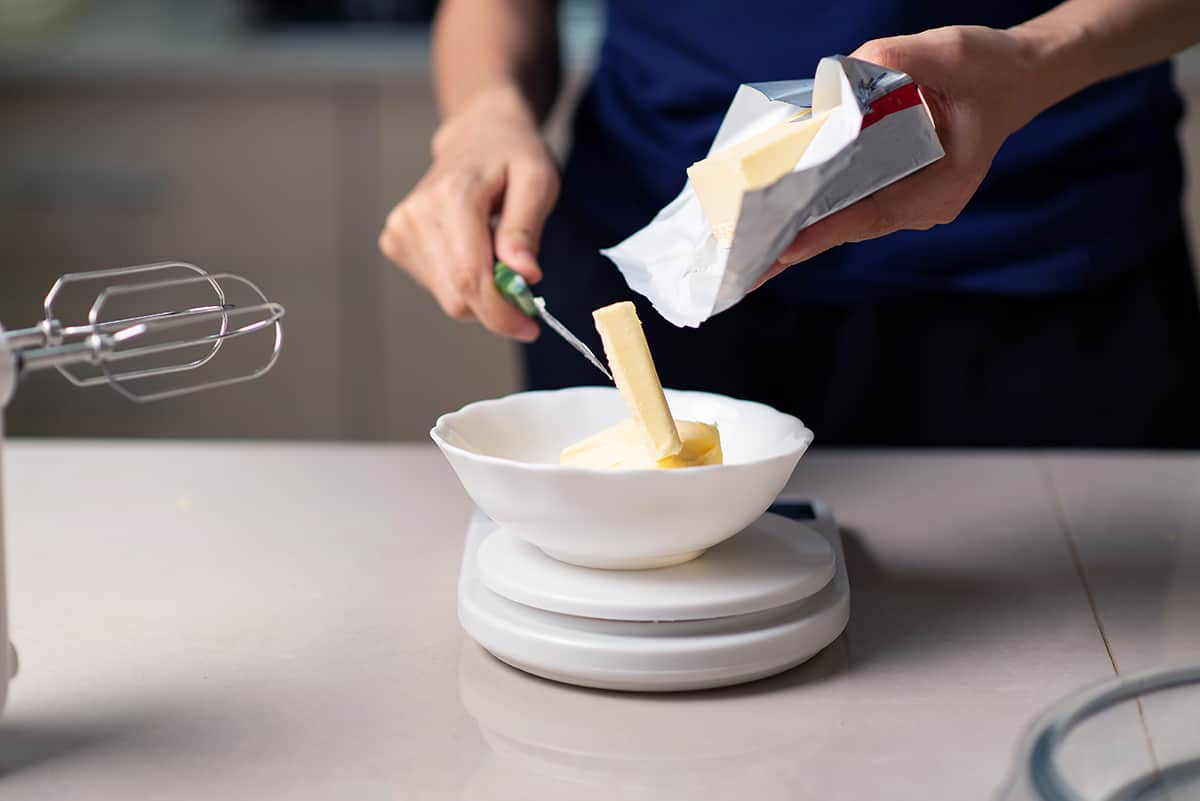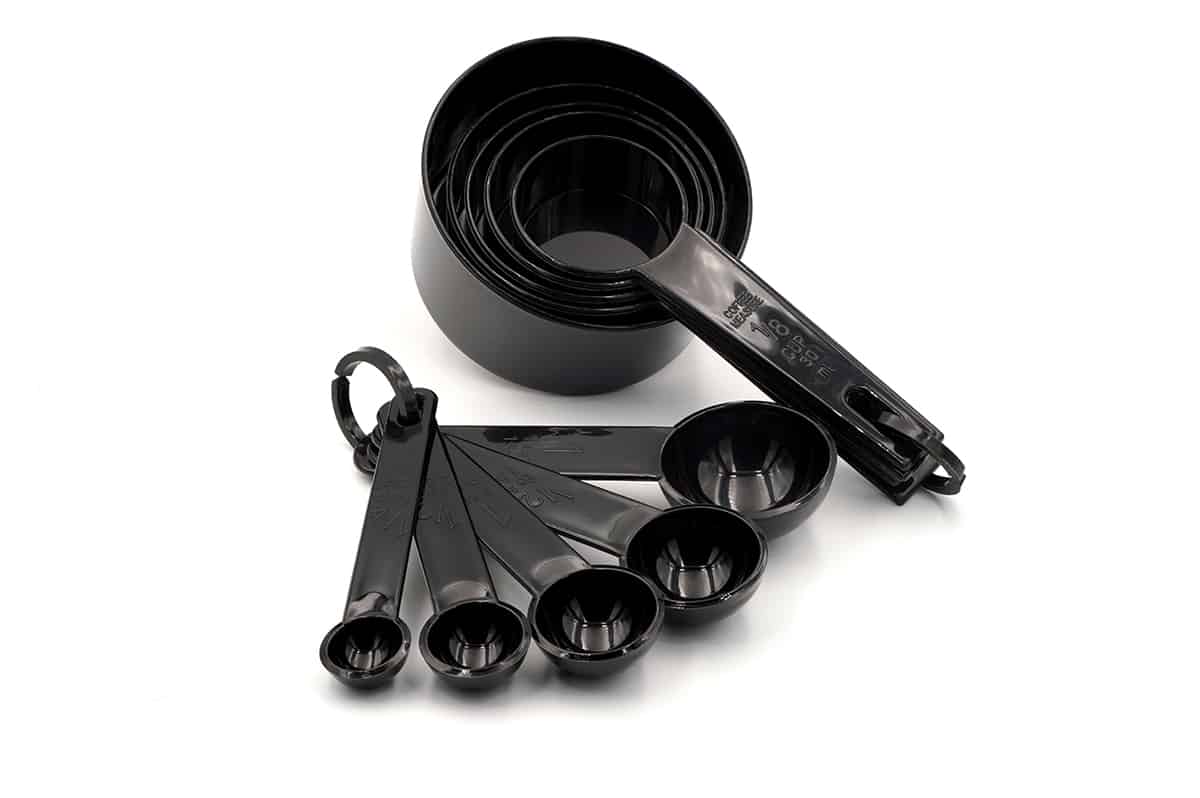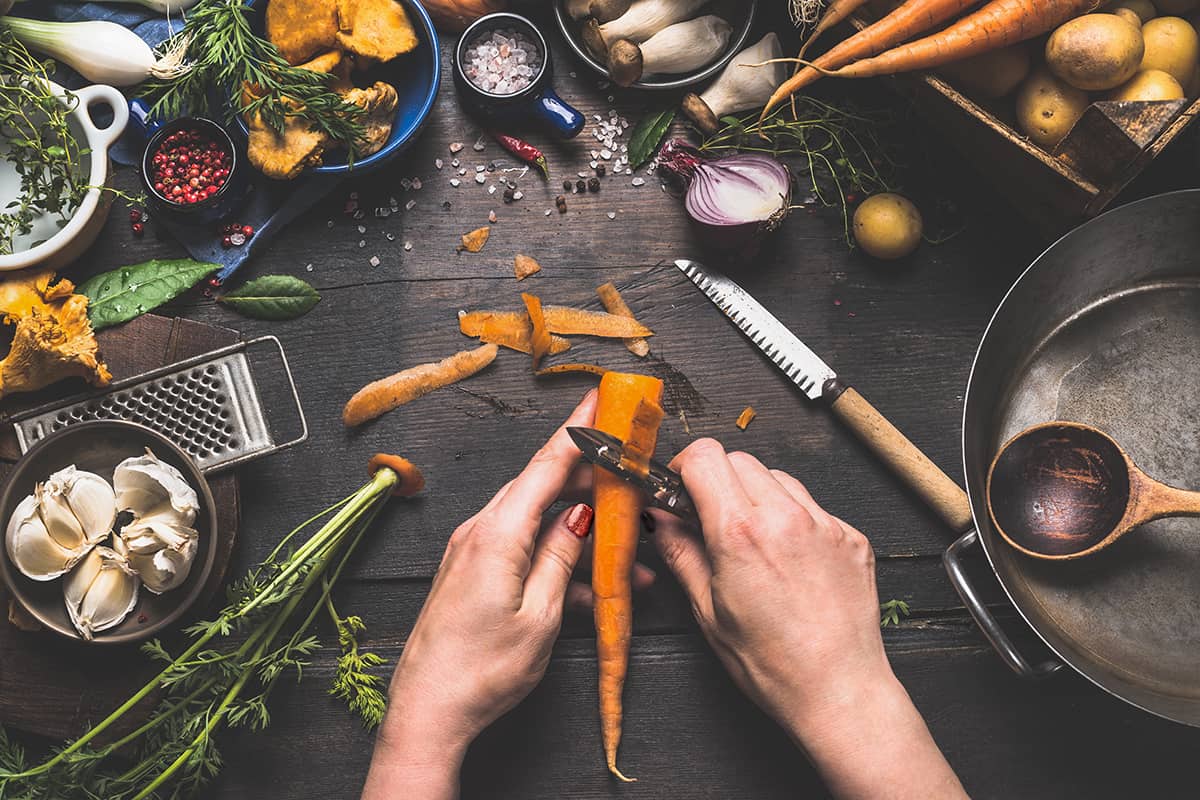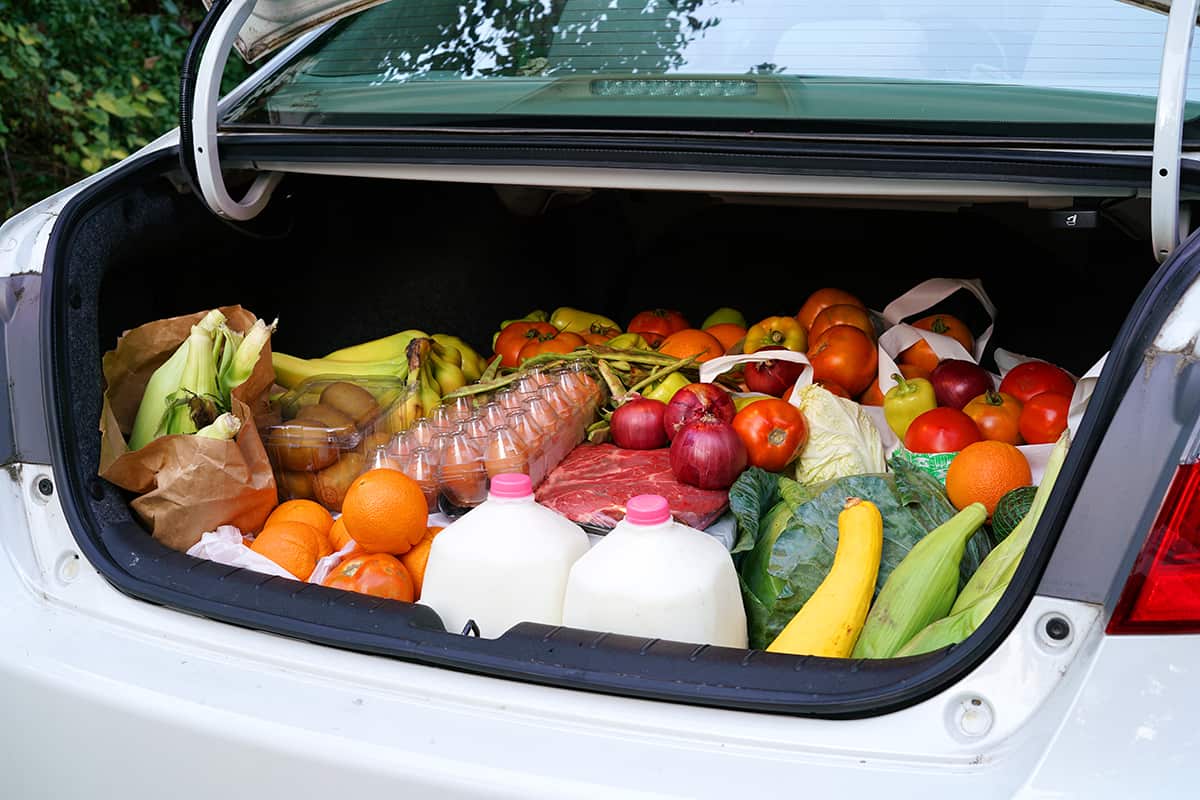Most recipes you find online will have you measure ingredients in volume—e.g., teaspoons, tablespoons, cups, etc. If you have the right measuring spoons and cups, measuring fractions shouldn’t be too difficult. But if you don’t and you have to use, say, 2/3 of a cup of an ingredient, how would you convert that to tablespoons?
2/3 of a cup would equal 10-2/3 tablespoons.
In this short guide, I’ll explain how to convert cups to tablespoons and vice versa, the unreliability of using volume measurements in baking, and the weight equivalents of 2/3 of a cup of common kitchen ingredients.
How to Convert Cups to Tablespoons?

Converting cups to tablespoons and vice versa is pretty tricky work. You have to know how many tablespoons there are in a cup before attempting to convert one to the other. And the confusion becomes compounded after learning that there are 16 tablespoons in every cup!
However, you can avoid all of the headache of converting cups to tablespoons by picking up a measuring cup with precise volume measurements, such as this 3-piece Pyrex Glass Measuring Cup Set. The markings on the exterior of the cups tell you precisely where to fill them in order to get fractions of a cup.
But what if you don’t have a measuring cup with markings for fractions of a cup? Well, that’s where simple mathematics comes into play.
To convert cups to tablespoons, you have to multiply the cup volume by 16. So, 2/3 of a cup multiplied by 5-1/3 will give us a product of 10-2/3 tablespoons.
The following chart will describe the converted figures from cups to tablespoons for common measurements.
| Cups | Tablespoons |
| 1/8 | 2 |
| ¼ | 4 |
| 1/3 | 5-1/3 |
| 3/8 | 6 |
| ½ | 8 |
| 5/8 | 10 |
| 2/3 | 10-2/3 |
| ¾ | 12 |
| 7/8 | 14 |
| 1 | 16 |
Very rarely will you have to convert tablespoons to cups unless you plan on making a large batch of a particular recipe. For instance, if a recipe calls for 1/8 of a tablespoon of flour and you’re preparing 20 batches in total, you will need to divide the tablespoon volume figure by 16 and then multiply it by 20 to get the cup total. The following table will show you how many cups are in each tablespoon count.
To demonstrate this, to make 20 batches of something that needs 1/8 of a tablespoon, you would need this many cups:
- Cups = Tablespoons ÷ 16
- Cups = 1/8 ÷ 16
- Cups = 1/128
- Total Cups for 20 batches = 1/128 × 20 = 20/128 = 5/32
Why Is Measuring by Volume Unreliable?
Although most recipes will have us measure ingredients by volume, doing so doesn’t produce the most accurate results. Why is that?
Chef John from Food Wishes has an excellent video that demonstrates the unreliability of using measuring cups and, by extension, spoons.
Basically, you can never account for the pockets of air that are hidden inside the ingredient. This becomes increasingly more problematic when measuring powdery ingredients, such as flour and icing sugar. By pressing down on the ingredient after scooping it with a measuring cup, the more you can fit in the cup, despite it retaining the same volume.
The much better alternative that professional chefs and bakers use is measuring ingredients by weight. Regardless of how much of an ingredient you pack into the measuring spoon or cup, weighing it will ensure that you never surpass the recipe’s instructions, provided that the author has provided weight equivalents per volume unit.
How Much Does 2/3 of a Cup Weigh?
The weight of 2/3 of a cup, or 10-2/3 tablespoons, depends on the ingredient you’re measuring. For instance, 2/3 of a cup is the same as 158 milliliters, which is 158 grams, which can be converted to 5.573 ounces of water.
However, sugar, which is denser than water but also contains air pockets between the individual crystals, will have a significantly different weight-to-volume ratio from water. To demonstrate this fact, 1 cup of sugar weighs 200 grams, so 2/3 of a cup is 2/3 of 200 grams, which is 133-1/3 grams or 4.703 ounces.
The following table will provide the weight equivalents of 2/3 of a cup of common kitchen ingredients.
| Ingredients | 1 Cup in Grams | 2/3 of a cup in Grams | 2/3 of a cup in Ounces |
| Water | 236 | 158 | 5.573 |
| Flour | 120 | 80 | 2.822 |
| Granulated Sugar | 200 | 133.33 | 4.703 |
| Brown Sugar | 200 | 133.33 | 4.703 |
| Icing Sugar | 125 | 83.33 | 2.939 |
| Salt | 288 | 192 | 6.772 |
| Eggs | 257 | 345.30 | 12.180 |
| Greek Yogurt | 285 | 190 | 6.702 |
| Buttermilk | 242 | 161.33 | 5.691 |
| Butter | 225 | 150 | 5.291 |
| Shortening | 205 | 136.67 | 4.821 |
| Lard | 205 | 136.67 | 4.821 |
| Margarine | 217 | 144.67 | 5.103 |
| Espresso Powder | 257 | 64.26 | 2.267 |
| Yeast | 150 | 100 | 3.527 |
| Milk | 240 | 160 | 5.644 |
| Honey | 340 | 226.67 | 7.995 |
| Cocoa Powder | 85 | 56.67 | 1.999 |
| Maple Syrup | 340 | 226.67 | 7.995 |
| Condensed Milk | 306 | 204 | 7.196 |
| Coconut Milk | 228 | 152 | 5.362 |
| Decimated Coconut | 95 | 63.33 | 2.234 |
| Heavy Cream | 231 | 154 | 5.432 |
| Sour Cream | 240 | 160 | 5.644 |
| Crème Fraiche | 232 | 154.67 | 5.456 |
| Cinnamon | 132 | 88 | 3.104 |
| Ground Walnuts | 80 | 53.33 | 1.881 |
| Peanut Butter | 250 | 166.67 | 5.879 |
| Jellies | 301 | 200.67 | 7.078 |
| Chocolate Chips | 170 | 113.33 | 3.998 |
How Do I Measure 2/3 of a Cup of Butter?

Butter is one of the trickier ingredients to measure. A single stick of butter is 8 tablespoons or half a cup. However, when you melt it, it will lose a bit of its moisture due to the heat, thereby reducing its overall weight. In addition, different recipes will call for different butter states—e.g., chilled, melted, softened.
2/3 of a cup of butter is the same as 10-2/3 tablespoons. So, you can take 1 whole stick of butter and add another 2-2/3 tablespoons. Pay close attention to the markings on the butter wrap packaging to ensure that you’re adding the correct amount.
Alternatively, you can measure the butter by weight. From the table above, you can see that 2/3 of a cup of butter is about 5.3 ounces. Make sure you use a reliable digital scale, such as the Escali Primo P115C, that can measure weight in fractions of an ounce.



